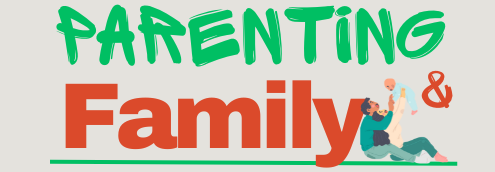Every parent hopes to create a home filled with laughter, trust, and love—a place where children feel safe, supported, and free to grow into their best selves. Yet in today’s fast-paced world, building a happy family can feel like a challenge. Between school schedules, work responsibilities, and the constant presence of technology, many families struggle to connect in meaningful ways.
But here’s the good news: a happy family isn’t about perfection. It’s about intention. It’s about choosing daily habits, communication styles, and parenting approaches that foster joy, respect, and togetherness.
In this long-form guide, we’ll explore what truly makes families happy, how to recognize and break free from toxic parenting patterns, and practical, research-based strategies you can apply to strengthen your family bonds. By the end, you’ll walk away with not just inspiration, but actionable steps toward creating the family life you’ve always envisioned.
What Does a Happy Family Really Mean?

Many people confuse happiness with material comfort. While financial stability is important, studies show that money alone doesn’t determine family well-being. A happy family is less about what you have and more about how you connect.
Signs of a Happy Family:
- Emotional safety: Family members feel secure expressing their thoughts and feelings.
- Shared time and rituals: From family dinners to holiday traditions, rituals strengthen unity.
- Respectful boundaries: Both parents and children understand limits and respect individuality.
- Conflict resolution skills: Disagreements are handled with calm discussion instead of yelling or silence.
- Mutual support: Each member celebrates others’ successes and provides comfort in tough times.
When these qualities are present, children not only feel loved but also gain the skills needed to build healthy relationships later in life.
The Foundation: Positive Parenting
Parenting styles shape family dynamics more than most parents realize. Research identifies four main styles: authoritarian, permissive, uninvolved, and authoritative (often called positive parenting). Of these, positive parenting consistently produces the healthiest outcomes.
What Is Positive Parenting?
Positive parenting is about guiding rather than controlling, teaching rather than punishing. It focuses on connection, empathy, and encouragement. Instead of demanding obedience, positive parents foster cooperation and mutual respect.
Benefits of Positive Parenting
- Stronger self-esteem in children – Kids feel valued and capable.
- Better emotional regulation – Children learn how to manage anger, sadness, or frustration constructively.
- Stronger parent-child bonds – Trust grows when children feel understood, not judged.
- Reduced conflict – Respectful communication minimizes power struggles.
Practical Examples:
- Replace “Stop crying, it’s nothing” with “I see you’re upset. Do you want to talk about it?”
- Replace punishment with logical consequences: if a child forgets homework, they experience the natural consequence of explaining it to the teacher, rather than unrelated punishment at home.
- Praise effort rather than perfection: “I’m proud of how hard you tried” instead of only celebrating the result.
By practicing positive parenting, families build a foundation of trust and joy that lasts long after children leave the nest.
Breaking the Cycle: Recognizing Toxic Parenting Patterns
Our E-book
No parent sets out to harm their child. Yet sometimes, unhealthy habits—often passed down from our own childhoods—create toxic environments. Recognizing these patterns is the first step toward change.
What Is Toxic Parenting?
Toxic parenting involves behaviors that consistently undermine a child’s emotional or physical well-being. It may include:
- Constant criticism or belittling.
- Emotional neglect (ignoring feelings or needs).
- Over-control, where children are denied autonomy.
- Favoritism among siblings.
- Gaslighting or dismissing a child’s reality.
Long-Term Effects of Toxic Parenting
Children raised in toxic environments may struggle with self-worth, anxiety, or difficulty forming trusting relationships. As adults, they may repeat the same patterns with their own families unless they consciously choose change.
How to Break Free
- Self-awareness: Ask yourself, “Am I responding to my child, or to my own past wounds?”
- Apologize when wrong: Modeling humility teaches children accountability.
- Seek support: Therapy, parenting workshops, or supportive communities can help shift ingrained habits.
- Choose empathy over ego: In tense moments, pause and ask, “What does my child need from me right now?”
By breaking toxic cycles, you not only heal your family but also give your children the gift of healthier futures.
Communication: The Heart of Family Happiness
At the core of every happy family is healthy communication. Without it, misunderstandings turn into conflicts and emotional distance grows.
Tips for Effective Communication:
- Listen actively – Maintain eye contact, nod, and repeat back what your child says to show you understand.
- Avoid harsh criticism – Replace “You’re so lazy” with “I noticed you didn’t do your chores—what got in the way?”
- Use “I” statements – Say “I feel worried when you don’t call” instead of “You never care about us.”
- Encourage honesty – Create a safe space where children can admit mistakes without fear of harsh judgment.
- Limit tech distractions – Put away phones during family conversations.
Strong communication reduces conflict, builds trust, and helps every family member feel seen and valued.
Daily Habits That Build a Happy Family
Happiness doesn’t come from one grand gesture—it grows through small, consistent actions.
1. Share Meals Together
Family dinners provide more than nourishment—they offer connection. Studies show children who regularly eat with their families are less likely to engage in risky behaviors and more likely to succeed academically.
2. Create Family Rituals
From Friday movie nights to morning hugs, rituals provide comfort and predictability. They remind children that home is a place of belonging.
3. Practice Gratitude
Encourage each family member to share one thing they’re thankful for daily. Gratitude rewires the brain for positivity and strengthens bonds.
4. Prioritize Play and Fun
Whether it’s board games, backyard soccer, or spontaneous dance parties, laughter is a glue that keeps families close.
5. Respect Individuality
Celebrate each child’s strengths, passions, and quirks. Allow space for independence while staying connected.
6. Model Healthy Conflict Resolution
Disagreements are natural. What matters is showing children that conflicts can be solved respectfully without yelling, blaming, or silent treatment.
The Role of Parents as Role Models
Children learn more from what we do than from what we say. A parent who demonstrates kindness, patience, and respect teaches those values far more effectively than lectures.
Ask yourself:
- Do I speak to my child in the way I want them to speak to others?
- Do I handle stress in a way I’d like them to imitate?
- Do I show love openly so they know how to give and receive it?
When parents embody positive behaviors, children naturally absorb those lessons.
Long-Term Benefits of a Happy Family Environment
The effort to build a happy family pays off for generations.
For Children:
- Emotional resilience.
- Higher self-esteem.
- Healthier peer and romantic relationships in adulthood.
- Academic and social success.
For Parents:
- Less daily conflict and stress.
- Deeper connections with children.
- A sense of fulfillment in knowing they nurtured a supportive environment.
For Society:
Happy families contribute to healthier communities. Children raised in supportive homes are less likely to engage in harmful behaviors and more likely to become compassionate, responsible adults.
Choosing Happiness Every Day
A happy family doesn’t mean a perfect one. It means a family that chooses love, patience, and respect even in difficult moments. By practicing positive parenting, breaking toxic cycles, and prioritizing communication and rituals of connection, you can transform your home into a place of joy and resilience.
Remember, parenting is not about getting everything right—it’s about showing up with love, again and again. The small choices you make each day—listening, hugging, apologizing, laughing—are the building blocks of the happy family you dream of.
👉 As you move forward, ask yourself: What is one small step I can take today to bring more happiness into my family’s life?





